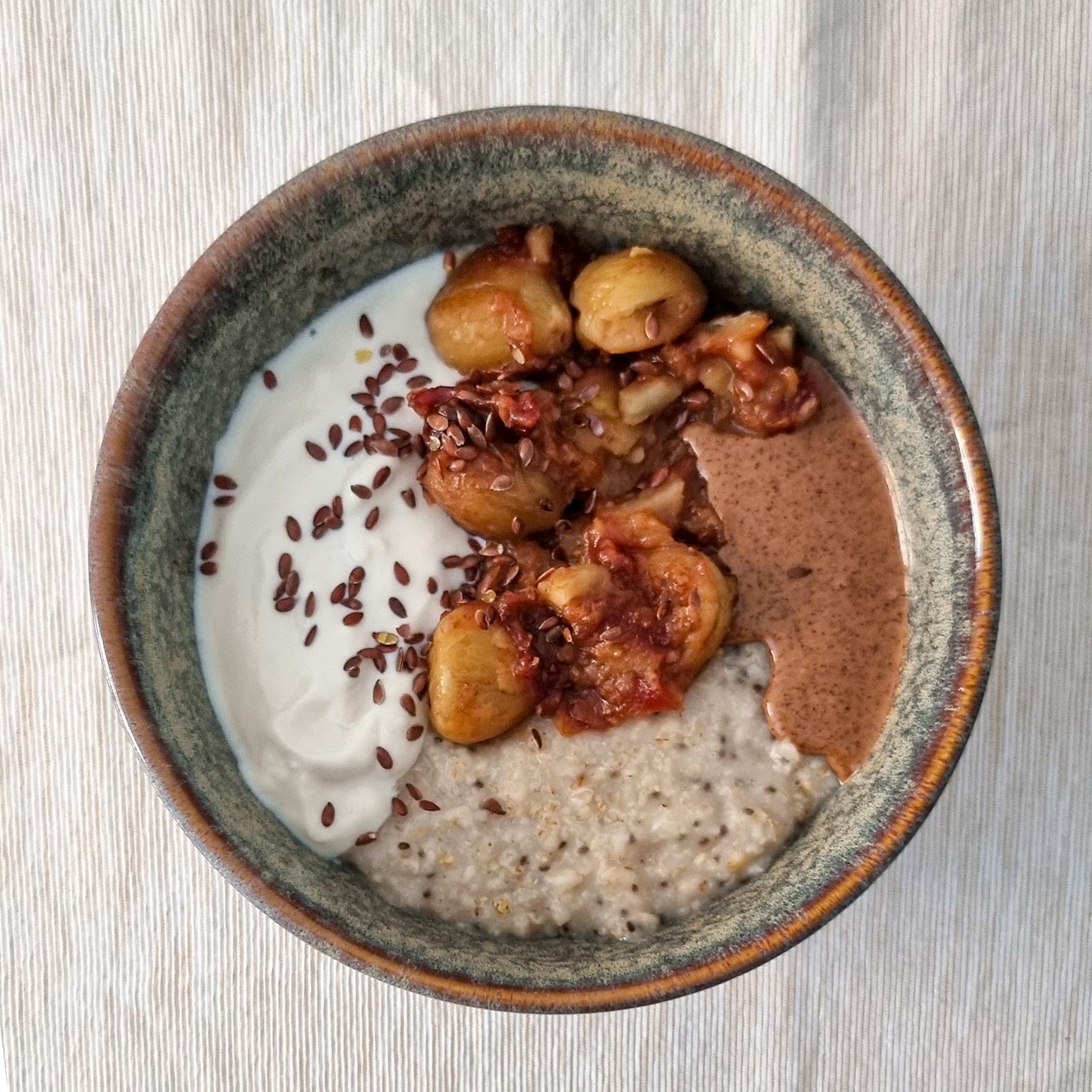I learned that anise is a divisive spice when a friend hosting a gathering warned me: “Look, just so you know, this has anise”. After I asked in surprise why she warned me about this specific ingredient, she told me she knew many people who didn’t like it.
I was not exceptionally familiar with this spice, as I used to encounter it in two contexts only - added to the chestnuts’ boiling water for some extra flavour and incorporated in small honey cakes I used to make with my mom -, but the memories of these flavours are good ones to me.
Anise, also known as aniseed or sweet cumin, is obtained from the fleshless fruits of the dill-like plant Pimpinella anisum. It is not to be confused with star anise, a spice coming from an entirely different plant.
The flavour and shape of anise remind me of fennel seeds. Indeed, they share some flavour compounds, including anethole and estragole1. Anethole is the main flavour compound in both, but it is more abundant in anise, resulting in a stronger flavour and possibly explaining why some people find it overwhelming. Anethole, and hence its particular aroma, can also be found in star anise and liquorice2.
Besides its unique aroma, anethole is naturally sweet3, thus adding some sweetness to dishes without the need for sugar. This is probably why anise is commonly added to baked goods and liqueurs.

Tips for using anise
Grinding the anise seeds helps release their aromatic oils.
To preserve flavour for longer, buy whole and grind as required.
Anethole, anise’s main flavour compound, dissolves in oil and alcohol, thus cooking the spice in oil or alcohol-containing ingredients can boost flavour.
Given their similar flavour profiles, fennel and anise can often substitute for each other. For quantities, consider that anise’s flavour is usually more intense.
Recipe
Chestnuts and plums
Anticipating the approaching Fall, here is a recipe inspired by my lifelong association of anise and chestnuts. It can be eaten as a mildly sweet snack, added to a breakfast bowl, or enjoyed as a side for a savoury dish (I’ll send out an idea in a future post). You may also use apples and a splash of lemon juice instead of plums.

Ingredients
1/2 tbsp olive oil
1/2 tsp anise
250 g chestnuts (frozen or boiled)
150 g plums, cut into 2 cm pieces (can be substituted with apples)
3-4 tbsp water
(If using apples) a splash of lemon juice.
Method
In a medium-sized pot on medium heat, add the olive oil.
Grind the anise seeds (I use a mortar and pestle), add to the pot, and cook for 1 minute.
Add the plums (or apples) to the pot. If using frozen chestnuts, add them (still frozen) to the pot too. Add a pinch of salt.
Cover with a lid and cook for 20 minutes. Using a spoon, stir every 5 minutes - remember to put the lid back on after stirring. When the fruit starts caramelizing and sticking to the bottom, add some water (1 tbsp at a time) and quickly stir to deglaze. Cover and repeat as needed. If using pre-boiled chestnuts, add them after 15 minutes and cook them along with the fruit for the remaining 5 minutes.
When the cooking time is over, the fruit should be soft. If using apples, add a squeeze of lemon.
Remove the mix from the pot so it doesn’t dry out further, and serve.
Enjoy!
https://herbsocietyblog.wordpress.com/2022/07/11/herbs-with-anise-fennel-and-licorice-like-flavors/
https://boroughmarket.org.uk/market-blog/the-spice-series-anise-star-anise-liquorice-fennel-seed/
https://pubchem.ncbi.nlm.nih.gov/compound/Anethole






I had absolutely no idea that anise and star anise were completely different things! great post!